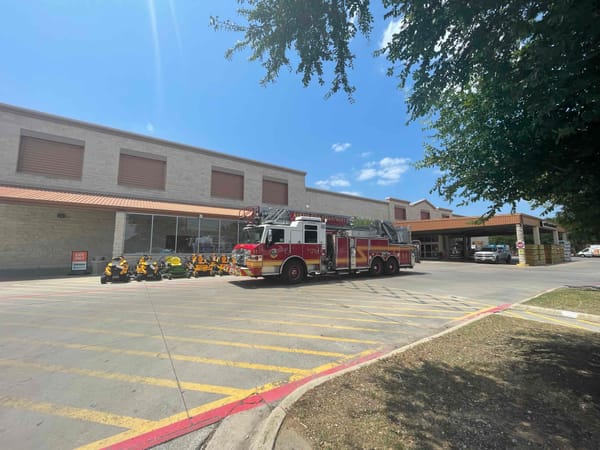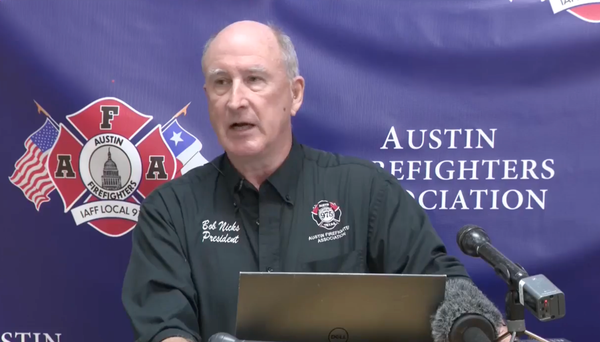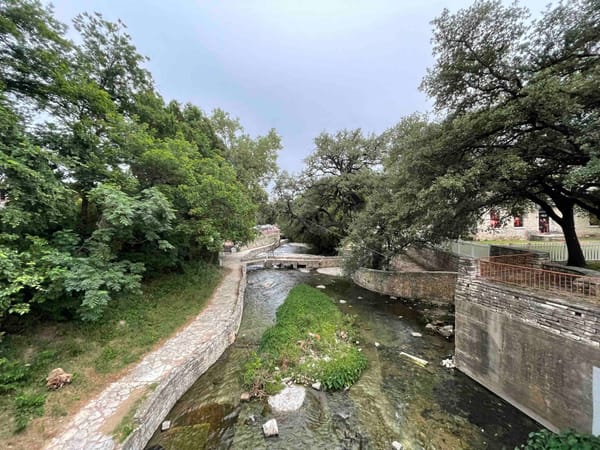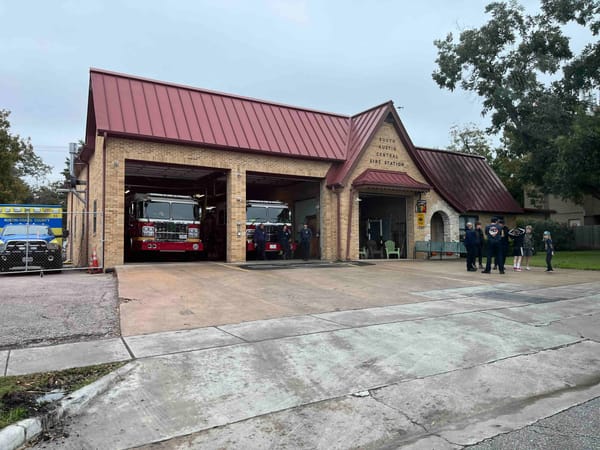Vacation! And Celia disses I-35 expansion
Celia Israel urges the city to stand up to TxDOT.

So I'm not really going to be working these next two weeks, at least not working hard. But I'll make sure to keep sending you stuff so you don't forget me. It will probably be a mix of links to other articles and some contributed commentary from readers.
What else will I be doing? Today we are heading to Houston. Among other things we're going to take my nearly 4-year-old daughter the Space Center, which she's very excited about. On Thursday evening I alone will fly out of Houston to visit my brother in Chisinau, Moldova, where he's been living on a Fulbright Scholarship for photojournalism. Moldova is a very interesting place right now. Many Ukrainians have sought refuge there from the war next-door, and like Ukraine, Moldova is a former Soviet republic that struggles with a split between pro-West and pro-Russian factions. There is a sizable minority of Russian speakers who lack fluency in Romanian, Moldova's official language. For 30 years there has been a small breakaway republic, Transnistria, which is essentially occupied by Russia.
After a couple days in Moldova we're going to fly to Bucharest, Romania, to meet my parents. Why Romania? Well, my parents wanted to visit him but my brother has seen enough of Moldova and wants to check out more of Romania, particularly scenic Transylvania.
I'll make sure to send pictures!
Celia Israel denounces I-35 expansion:
The woman who came within 900 votes of being mayor recently offered some comments on TxDOT's proposed expansion of I-35, for which Mayor Kirk Watson is a major cheerleader.
In her email to me, Israel referenced the many comments from residents submitted to TxDOT opposing the plan.
So many residents living in and around the core of IH35 are opposed to any of the plans TXDOT has put forth, the City wants more - the County wants more and the legislators want more so what weight do those letters carry? My concern is we ask for people's opinion and then ignore them - then they check out and say "government sucks."
Why is the City corridor office moving forward with planning planters and pretty things on top of a cap when we don't yet know the final details? Could it be deals have been cut? Shocking.
Early versions of the TXDOT plan had a real BRT going down the middle of it - I saw the plans in 2014/2015 then when the political winds changed, 'weathervane Abbot' meddled and suddenly the plan went dark for over a year before TXDOT churned up the plans again.
Early discussions about a cut also included TXDOT paying for the Cap. What happened? There is a lot of money at stake here.
So if the project moves forward, will we see any negotiations like we saw in Houston? Treatment of water runoff; more affordable housing - all are mentioned in the Tribune article about the restart of I-45.
Local leaders have finally risen up at the behest of community voices but will they be there once again to challenge TXDOT on the details?
Here are some of the more detailed comments she made to City Council last week:
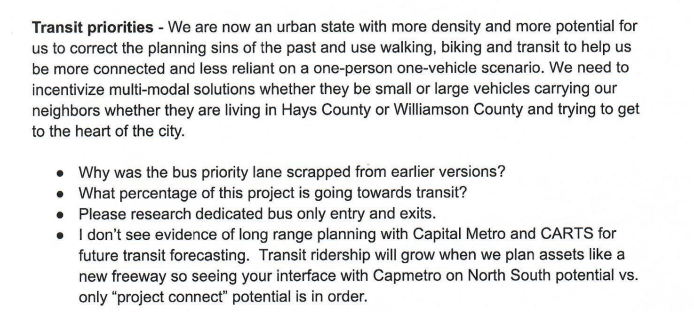
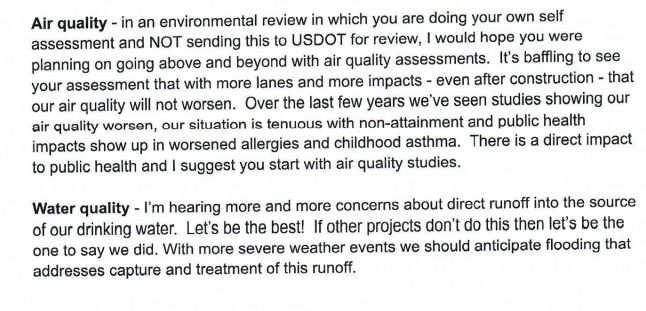
Good questions, but I-35 cannot be a "transit project" no matter how many times Kirk Watson, Steve Adler and the Chamber of Commerce say so. The only way for bus-rapid transit to work on that corridor is through the Reconnect Austin or Rethink35 visions. Even if there were a dedicated bus lane, a highway is the worst place to put high capacity transit –– where would people get off? And what would they be walking to? Now, if you buried the highway and put an urban boulevard on top and allowed the former frontage roads to be redeveloped into billions of dollars worth of housing and commerce...then it would become a great transit corridor!
The loss of 'historic' Travis Heights homes is not the problem. The problem is what's replacing them: Some members of the Historic Landmark Commission are bemoaning the demolition of historic single-family homes in Travis Heights. I agree with them that the original is more charming than the replacement.
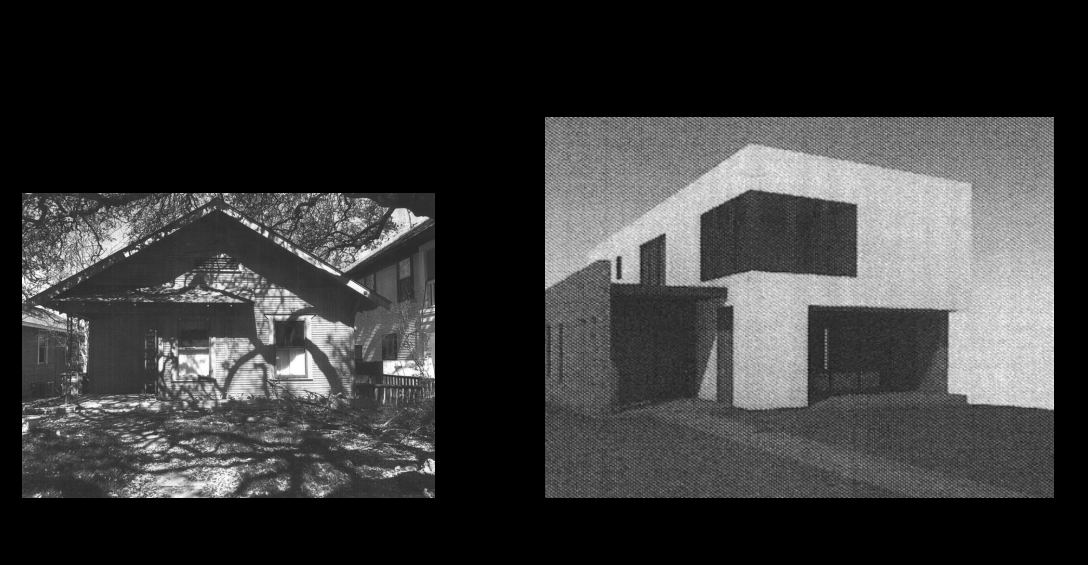
But the solution here isn't a local historic district that will freeze the neighborhood in amber. That will just ensure that the neighborhood becomes even more inaccessible to the vast majority of Austinites. If you want Travis Heights to remain somewhat interesting culturally, then you need to allow different types of homes to be built. Replace that bungalow with four or six small units; I guarantee you they can fit on the lot.
The consequences of Travis Heights' low-density zoning is brought into sharp relief when you look at how riders are projected to come from the future Travis Heights rail station. Below is the 2019 study of the proposed Blue Line, part of which will be built in the first phase of Project Connect.
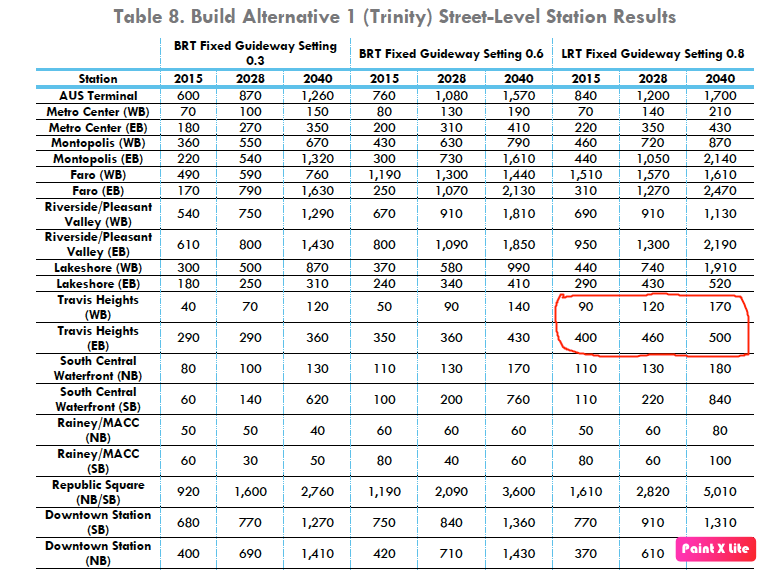
Just compare its performance to some of the stations with more multifamily housing nearby. 1,270 people a day will board the train going west from Riverside & Pleasant Valley in 2028. By 2040, that will nearly double to 2,470. Meanwhile, the Travis Heights westbound station will generate 460 riders a day in 2028 and 12 years later that figure will have only increased by 40 –– to 500.
Why? Because there's NO NEW HOUSING BEING BUILT there! Sure, there is probably plenty of construction, but little of it is increasing the amount of housing on the ground. You're just replacing an old house with a new house. This is why the fact that Austin has issued a record number of building permits is NOT an indication that we're substantially increasing housing supply, as former Council Member Daryl Slusher seems to believe. And more importantly when it comes to transit, very little of the new housing is being built in the city's urban core.


